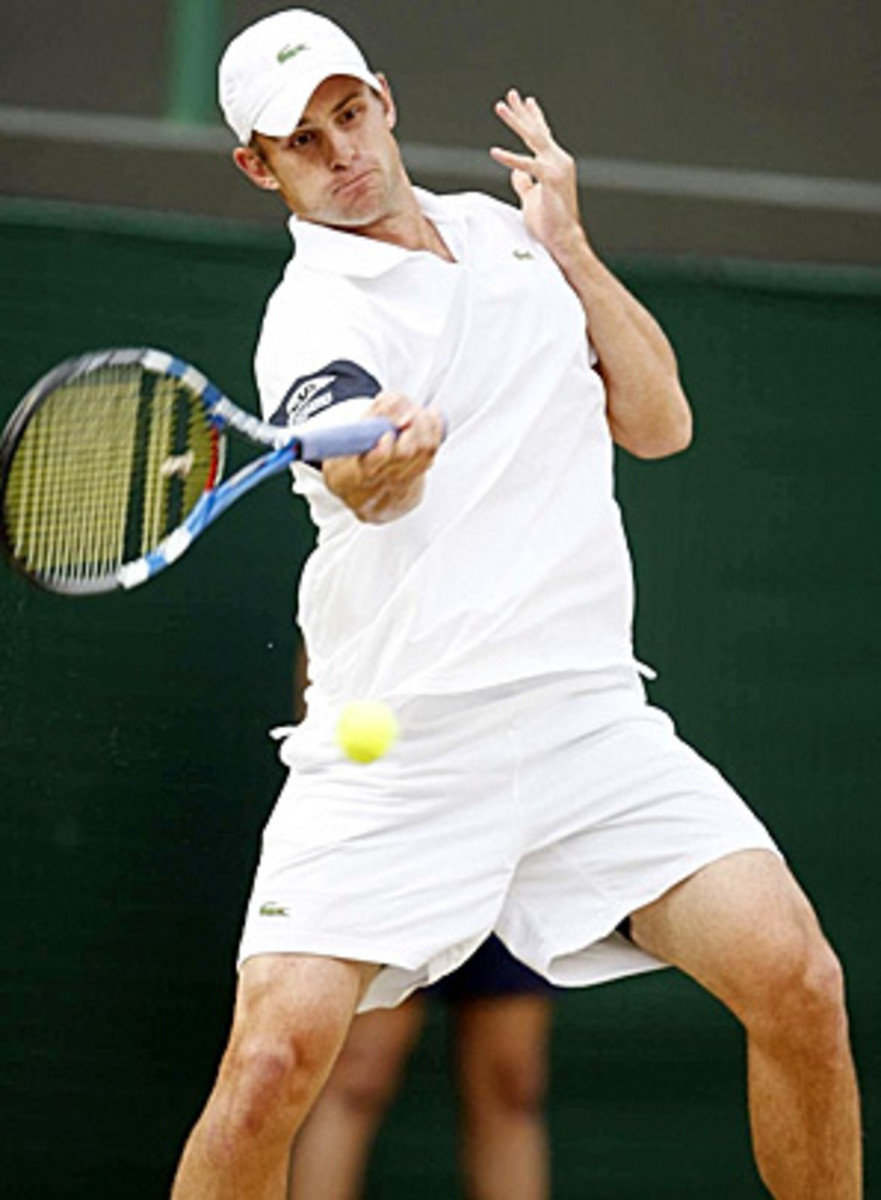Passing shots: Improved Roddick still has time to burnish his legacy
The grassroots renaissance of tennis in the United States was the subject of an Associated Press feature that appeared online and in many newspaper sports sections over the weekend. The story argues, among other things, that "today's dearth of top American professionals" hasn't curtailed the sport's post-2000 growth:
[T]ennis' backslide in America was widely blamed on the dearth of compelling stars in the 1990s. Pete Sampras was great but dull, Jim Courier came off as unapproachable, Jennifer Capriati was a train wreck and Lindsay Davenport, who seemed to do everything right, didn't capture imaginations.
Not much has changed, though. Outside of the Williams sisters, America hasn't produced a mass-market tennis star in more than a decade. That was Andre Agassi, who claimed, "Image is Everything'' -- a slogan critics said defined the me-first attitude of the '90s tennis star.
In context, it's probably a fair characterization of the past two decades. But does anybody else find the omission from the entire discussion of Andy Roddick, one of the most consistent presences on the ATP Tour over the past eight years, a glaring one? The 26-year-old might not be a transcendent superstar on the level of a John McEnroe, Jimmy Connors or Venus or Serena Williams, but certainly he's one of the sport's most recognizable faces and winning personalities.
Why does this particular slight, perceived or real, matter? When Roddick takes the court Wednesday at the Legg Mason Tennis Classic in Washington, D.C., in his first match since that soul-crushing defeat to Roger Federer in the Wimbledon final a month ago, the Omaha, Neb., native is embarking on perhaps the most important stretch of his career. And his response should go a long way toward defining how he's remembered as a player.
There's no need for Roddick, the only player besides Federer to finish every season since 2002 in the top 10, to apologize for his résumé. He's won a Grand Slam during that span, the '03 U.S. Open, and reached the final of four others. While previous American stars have shirked Davis Cup responsibilities, Roddick has embraced the international team event and, in 2007, helped the U.S. to its first title in 12 years. Never in those famously irreverent press conferences have you heard Roddick complain about the unfortunate wedge of his career between four of the greatest players ever, with his ascent coinciding with Sampras and Agassi and his middle act coinciding with Federer and Rafael Nadal.
The point? If he's not getting props from a national sportswriter in his own country at this point, Roddick's clearly got some more work to do. That work begins Wednesday with his '09 U.S. Open Series debut, as the Legg Mason top seed tries to build on what's been a successful season.
Supporters of Roddick have plenty of reasons to be encouraged. Since he hired Larry Stefanki as his coach last December, the improvements in Roddick's tactics, fitness and all-court game have been apparent. He turned heads with a run to the Australian Open semifinals in January and delivered perhaps the finest performance of his career in the historic Wimbledon final.
"I'm having difficulty separating Wimbledon from the rest of the year," the fifth-ranked Roddick told reporters Monday in Washington. "Everyone's focusing on that but I feel like I've been doing a lot of the things I applied at Wimbledon from January forward."
Roddick has the singles titles (27), the Davis Cup victories (31, second only to McEnroe), the requisite spell atop the ATP rankings (13 weeks) and the signature trait (the fastest recorded serve in history). But his place among America's all-time tennis greats remains on shaky ground until he can break through for that elusive second Grand Slam title. Fortunately, in light of his '09 resurgence under Stefanki, his chances of getting it are looking better all the time.
Sam Querrey's victory at last week's Los Angeles Open was not without a measure of controversy. It was impossible to watch one of the 21-year-old Californian's matches -- even on television -- without hearing his raucous, bare-chested throng of supporters known as the "Samurai."
The group, made up mainly of Querrey's former high school classmates, dresses in warrior headbands, Samurai pants and body paint. They're loud and raucous from start to finish, on occasion drawing complaints from spectators and, more recently, Querrey's opponents.
"Those guys just showed they have no class. It's up to Sam to take control of the situation if he wants to," said Tommy Haas, who lost to Querrey in the semifinals.
But the value of such enthusiasm is not lost on tournament administrators who are growing more and more desperate to sell tickets in a down economy. The organizers of the Indianapolis Tennis Championships (where Querrey fell to Robby Ginepri in the final) reportedly went as far as to pay the traveling expenses of Samurai members.
"We were joking about this in 2006 that one day it would be a dream for tournaments to fly us out," Querrey told the Ventura County Star. "The next step for them is they want to get the clothing sponsorship. I think they have a shot."
"Yes, Obama is born in the USA! Elvis is dead too. Common people! Get with the program!"--Doubles star Liezel Huber, speaking out against the "birthers," July 27, 11:45 p.m.
"why do i always laugh when i see the person driving the car that says "student driver"? i look and just wait for them to mess up.." --Andy Roddick, hopefully not tweeting while driving, Aug. 1, 1:15 p.m.
"I'm gonna pretend I didn't just see a 9yr old drinking what looks very much like beer."--British teen Laura Robson, herself a long way from legal drinking age, looking the other way on a youthful indiscretion, Aug. 2, 6:09 a.m.






